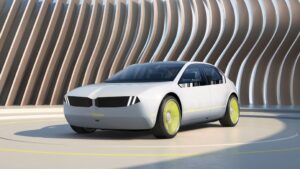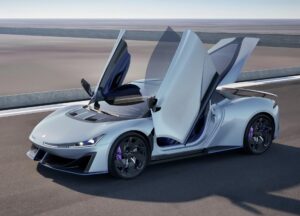
Review of the Ferrari Purosangue
The novelty is built on a modified version of the Roma front-engine coupe platform (Type F169), which has been in production since 2020. Externally, the car stands out with a long bonnet, massive sidewalls, large air intakes and vents, and a cab shifted to the rear axle. The doors do not have window frames, and the rear doors open counterclockwise and have a standard electric motor for easy opening and closing.

Overall length, width and height are 4973, 2028 and 1589 mm, respectively, while the wheelbase is 3018 mm. There are 22-inch wheels in the front and 23-inch in the rear. Dry weight of the vehicle reaches 2033 kg! Curb weight is 2173 kg, and the gas tank is designed for 100 litres.

Interior .
Four separate seats are installed in the cabin, and all of them are equipped with an electric drive. The steering wheel has a switch for driving modes, headlight and indicator controls, and the transmission is controlled by miniature selectors on the central dashboard, designed as the slots of classical “mechanics”. There is no central display of the multimedia system, instead there is a separate 10.2-inch screen in front of the passenger.

Specifications of Ferrari Purosangue
Purosangue received an eight-speed preselective “robot. The car accelerates to a “hundred” in 3.3 seconds, to 200 – in 10.6. Maximum speed in the passport is 311 km/h. Four-wheel drive works according to the same scheme as Ferrari FF: the engine drives all four wheels at speeds up to 200 km/h. A separate gearbox is responsible for the front wheels. Above this figure, only the rear pair remains in drive. This is beneficial for driving dynamics, handling and economy.

The car has received Ferrari Active Suspension Technology (FAST). Multimatic dampers help in roll and the suspension can lower the car by a further 10 mm to lower the centre of gravity.





